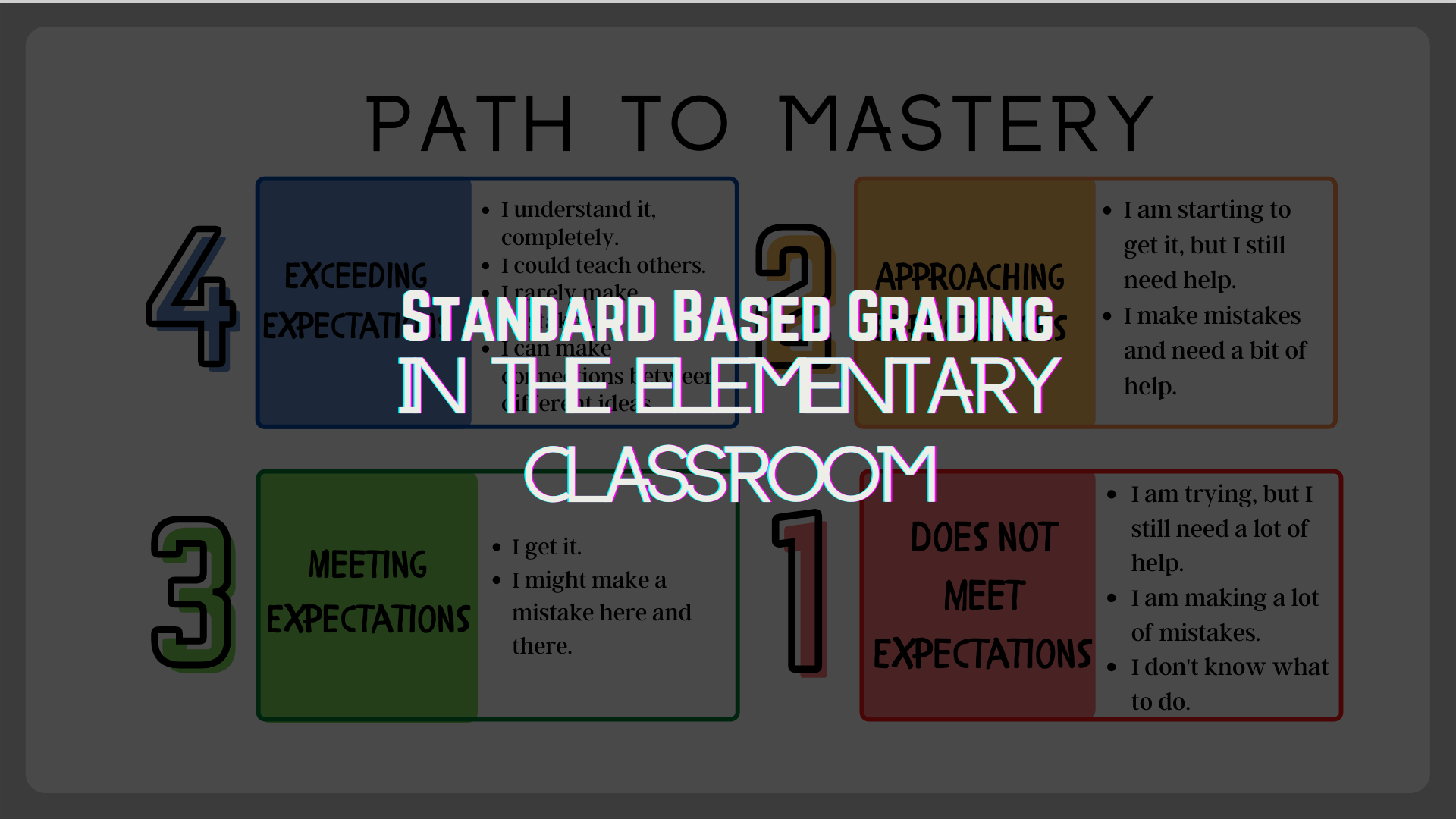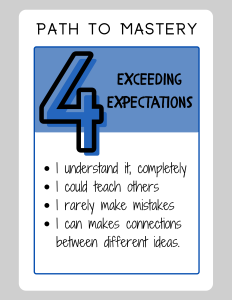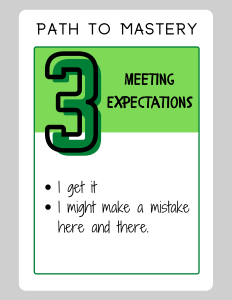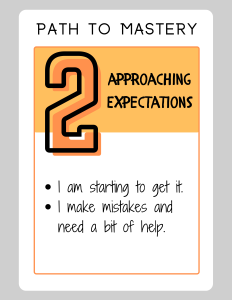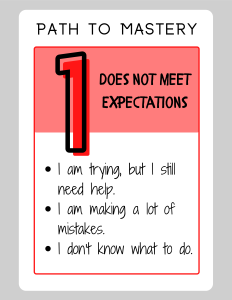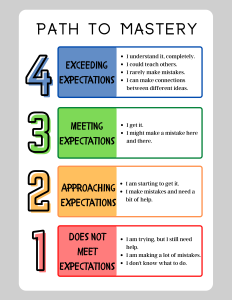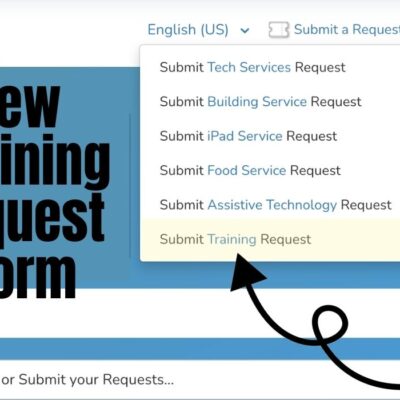Before we begin, it is important that we all have a shared understanding of the purpose of grades. For standard based grading, we need to agree that the purpose of grades is to represent what students know and are able to do. If this is something you can agree with, you are ready to get started with standard based grading.

So what do we need to do to get started?
We’ve been working on essential standards in PLCs for almost two years. It’s time to put those essential standards to work by linking them directly to what students are doing in your class.
Your essential standards describe what a student should be able to do. They are the backbone of SBG and should drive every instructional decision you make in terms of what you assign. Consider translating your essential standards into “Students will be able to…” objectives. This helps your students see the direct connection between the learning target and the work they are completing.
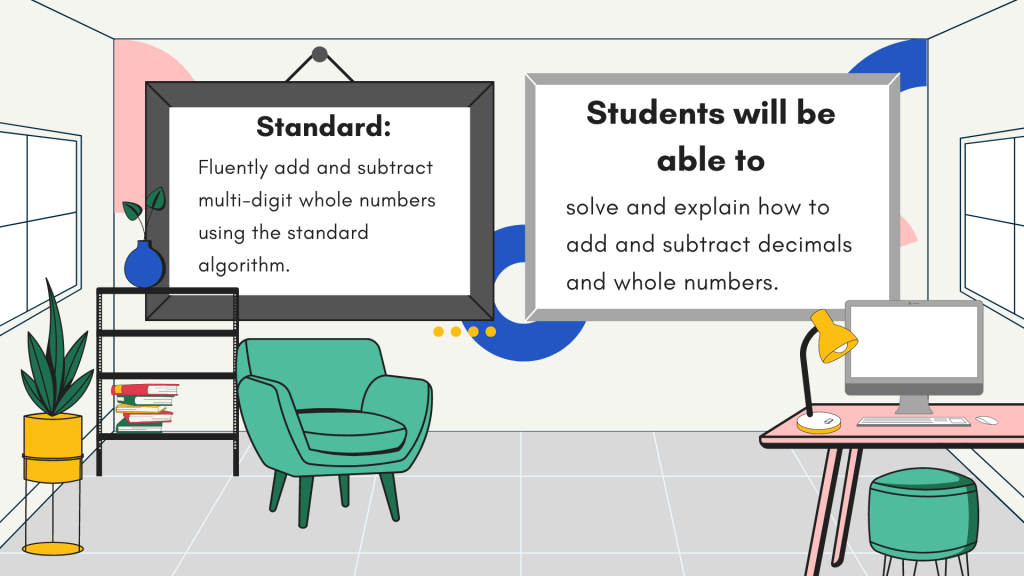
How is the actual grading different?
In order to use SBG, you need to consider what is your proficient level of mastery. Is a student proficient and has mastered the concept if they have scored a 3 out of 4? A 4 out of 5? An 80%? Decide on a scale or rubric that works for you, and try it out.
Don’t make the scale a secret. Students need to know how they are being assessed. Check out the images below. Consider putting something like these in your classroom for all to see. Want these for your classroom? Grab them here.
Then when it comes to grading, grade as you always would. Correct the assignment if you wish, but be sure to score each assignment that is going to be factored into their standard score according to your scale. Give student feedback based on the part of the standard that may need more work. Check out the examples below of some corrected assignments from my classroom. Both students found all 6 answers and earned a 100%, but only one student scored a 4/4 on the standard.

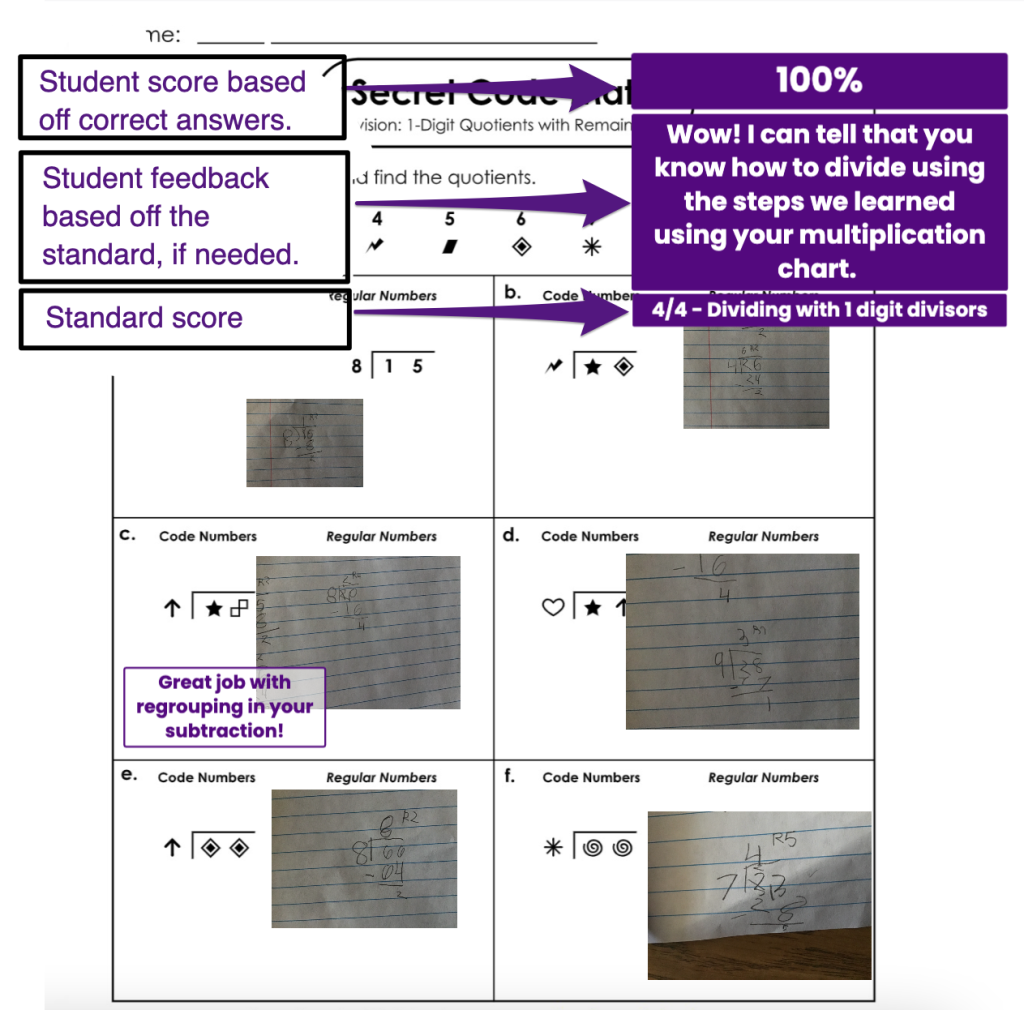
How does my gradebook change?
I am going to share with you how my gradebook works. This exact model might not work for you, but that’s okay. The goal is to find a way to clearly show what students have demonstrated and what they still need to work on.
All of the assignments I add to my gradebook are linked to an essential standard,graded based on participation, and are worth 1 point each. Did students turn in the work and does it appear that they tried their best? If yes, they’ve earned a 1 out of 1 for that assignment. If a student does not complete the assignment, for any reason, I leave the score blank. Students don’t turn in assignments for a lot of reasons. Maybe they didn’t have the skills to complete it independently or they were at intervention. Perhaps they were absent, they were having a bad day, or they were doing challenge work instead. By leaving the assignment blank, it does not hurt students to not turn in work, but it does help them if they turn it in. I include these 1-point participation scores to help encourage students to complete work and to do their best.
I also create an assignment for each standard. The standard score assignments are titled by the standard number and name, and are worth 4 points. Students continue to grow these scores throughout the quarter, and each time they complete an assignment that focuses on that essential standard, I reevaluate their score. Within the description of the standard score assignment, I keep a running record of what assignments have been used to create this score.
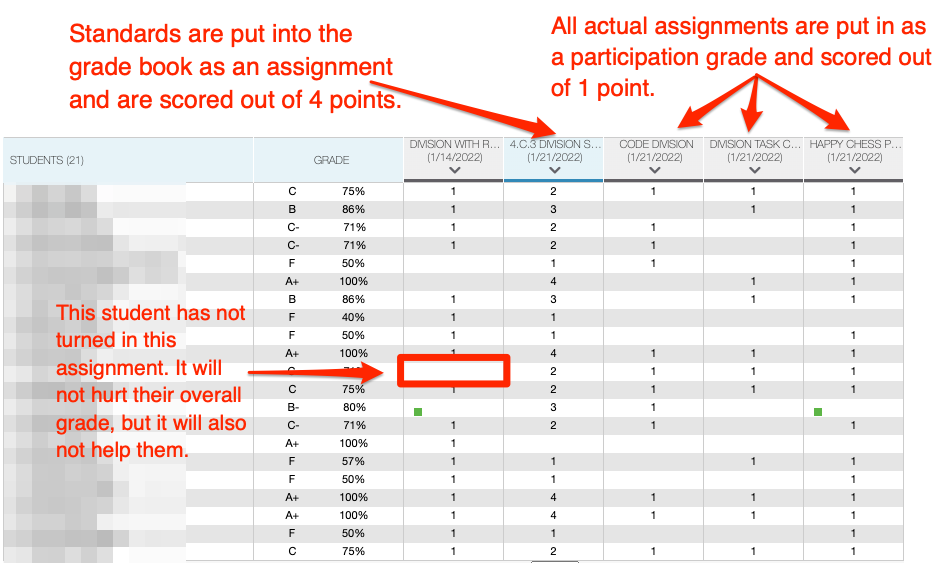
But doesn’t it matter that students turn in their work on time? Yes, and no. Standard based grading takes out all other considerations, like timeliness, cooperation, effort, etc., and puts the focus on student knowledge and mastery. Are those things important? Absolutely. And they already have a place on the report card, it just doesn’t fall into the coursework grades. The purpose of our PRIDE scores are to share how our students are doing in terms of their persistence, responsibility, integrity, determination, and efficiency. That is the ideal place to share how your students are doing in terms of their classroom behaviors and educational habits. However, keep in mind that those habits should not be simply shared at report card time. By regularly communicating with parents there should be little surprise once report cards are sent home.
Are you looking for ways to auto-populate the standards already included on your report card? Check out this video to learn more!
We would love to hear how you make standard based grading work in your classroom! Share your favorite tips and tricks below in our comment section.
